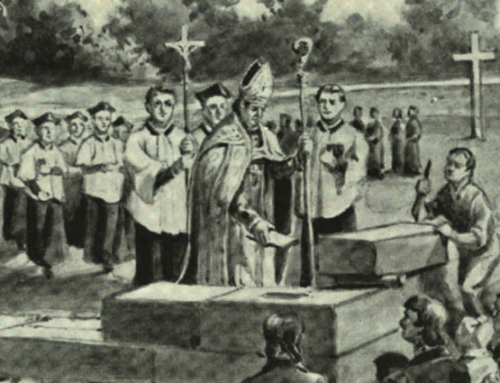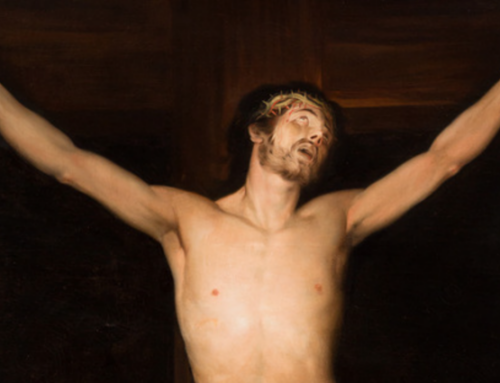Life entails taking risks. The failure to see that seems to be behind the readiness of so many adults in our society to accept what seem to me to be criminal limitations on our economic and social freedoms in the name of security.
 If there is anything I do not wish to write about anymore, it is Covid-19. Yet it, or rather our society’s action in its name, remains the curse that keeps on giving. The radio host and commentator Dennis Prager observed early on that our overreaction to this virus may be the greatest public policy mistake in history. Given the continuing overreaction to it and all we know about the real risks it presents—much smaller than the risks presented by our own decisions—he now calls our response “criminal.”
If there is anything I do not wish to write about anymore, it is Covid-19. Yet it, or rather our society’s action in its name, remains the curse that keeps on giving. The radio host and commentator Dennis Prager observed early on that our overreaction to this virus may be the greatest public policy mistake in history. Given the continuing overreaction to it and all we know about the real risks it presents—much smaller than the risks presented by our own decisions—he now calls our response “criminal.”
Mr. Prager is right, as he is on the fact that our societal overreaction is based on fear and hysteria. Crimes, like all wrongdoing, are often motivated as much by unruly fears as they are by lust for power. Of course there is plenty of lust for power on display in government officials who have continued to seize “emergency” powers in their states or cities even though there is no emergency on hand. But such actions are always justified by fear sold to the populace, even when there is really no serious threat around.
In Minnesota, where I live, Governor Tim Walz (whom one friend calls “Tim Jong-Walz”) continues to exercise such powers over our lives despite the fact that there have never been more than 600 people with Covid diagnoses in the hospital at the same time. As I write, the morning update on our state’s health website tells me that today there are 263 people in the hospital with such a designation. In a state of 5.6 million souls, this means that about five-thousandths of one percent of the population are currently hospitalized with such a designation. Given that hospital patients are routinely given tests for Covid, it isn’t even clear that the people in the hospital with such a designation are even there because of Covid. It’s a bit shocking that the same people who tell me that because only seven percent of our recent protests are violent means that everything is hunkey-dorey-a-ok in America, are willing to continue to live under an array of absurd Walz-imposed conditions because 1800 or so fellow Minnesotans with a median age of 83 (73% of whom were in long-term care already) have died with a virus over a period of six months.
And yet the Covid-worriers are out there. The hysteria about children has been deafening. I hear parents, some with scientific training, explaining that in-person school is too dangerous for their children. Never mind that children are more likely to be struck by lightning or drown than they are to die of Covid. Indeed, children are much more likely to die or become permanently disabled in a car crash than to die or even spend some time in a hospital because of Covid. As of September 2, the CDC had reported 60 deaths involving Covid for kids under 15. All deaths, especially of children, are terrible, but this is a tiny number of deaths compared to accidents and other diseases. There is effectively no risk for children from Covid unless they have severe pre-existing conditions.
The same goes for college students. While the CDC lists 300 deaths in the 15-24 category, this is still similarly a tiny risk given that there are over 43 million Americans in this age category. The utter hysteria that has greeted reports of “cases” of Covid on major college campuses that have allowed students to return this fall (albeit with more or less draconian rules, mostly drawn up to meet the demands of tyrannical governors, risk-averse in-house legal counsel, and themselves-hysterical university faculty) has not been matched by anything even close to danger for students. Andrew Bostom, a physician and academic, recently tweeted a chart he had created showing the number of cases of Covid detected on 29 different large campuses, including Penn State, Alabama, the University of Minnesota: 25,941 cases! But in the far right column he included hospitalizations. I will not tell you the total, but the clue is that it rhymes with “hero.”
Even for adults, I think the data bears out that much of the fear is misguided. While there have been many attempts to scare people about the gathering of 350,000 people in Sturgis, South Dakota, for the annual motorcycle rally, as I write there has been one Covid-death linked to that event. Like our youngsters, adults are not at great risk. But you would not know this in many neighborhoods. Walking to work, I still encounter people who walk thirty feet out of the way when they see anyone walking toward them on the sidewalk. There are people even more gripped by fear whom one encounters on the internet, which one journalist labeled “the vanity press of the demented.” One finds journalists who have not left their apartments in months, and other such strange behaviors. Paulette Cooper Noble, a writer who lives in Florida, was given space in the Washington Post recently to explain how she orders everything online, refuses any contact with delivery people, and washes everything after touching the deliveries. She only leaves her house in goggles and gloves—after she has taken her temperature and tested her sense of smell—and turns her face away and holds her breath if she comes in contact with any people on her trip into the sunlight. She then rinses her eyelids and scrubs her nostrils with a Q-tip upon return.[1]
Ms. Noble is 78 years old, so it is true that she would be more at risk of serious illness or death than the average American if she did catch Covid, but is this at all sane behavior? The problem is one of how to live life in a world that involves risks.
We do not respond well to them these days. Our response to the pandemic continues the strange journey of American and Western culture from a culture that took risks to do great things to what the journalist Matt Labash has called the “wussification” of America.
As a rule of thumb, we train ourselves for important things by meeting the challenges of less important things. We are ready to respond to important risks because we have practiced responding to minimal risks. Consider one discouraging case of how we have been practicing. In a 2001 article, Mr. Labash looked at the pressure being put on physical education teachers since the 1990s to get rid of dodgeball.[2] Labash highlighted Neil Williams, then and still today a professor of health and physical education at Eastern Connecticut State, who had written a series of articles for the Journal of Physical Education, Recreation, & Dance to establish a “Physical Education Hall of Shame.” The article about dodgeball was entitled “Pre-meditated Murder: Let’s bump off killer ball.” If one who was not so good at dodgeball is tempted to sympathize with Professor Williams even a little, it becomes increasingly more difficult when one discovers that he demonized any games that “are patently dangerous, have minimal participation by the majority of students, have limited physical activity, require little . . . pedagogical skill to teach . . . or single students out for potential embarrassment.”
If you were wondering what this means, Williams spelled it out. Kickball, steal-the-bacon, and duck-duck-goose should be verboten.
The landing boats at Omaha Beach in 1944 were filled with young men who risked death to preserve liberty. I do not know if we could do that today. We live in a society that has for twenty-plus years been encouraging children to be afraid of duck-duck-goose. Is it any wonder that the now-grown kids of 2001 are afraid of what will most likely be a cold for their children? Is it any wonder that the adults who sounded the alarms on the toxic dangers of kickball now flee from people on the sidewalk as if they were lepers?
Life entails taking risks. The failure to see that seems to be behind the readiness of so many adults in our society to accept what seem to me to be criminal limitations on our economic and social freedoms in the name of security. Benjamin Franklin observed, “Those who would give up essential Liberty, to purchase a little temporary Safety, deserve neither Liberty nor Safety.” I will leave off the question of desert here, for I want even my mistaken friends to enjoy both. But it is important to note that those who give up liberty to purchase safety unless absolutely necessary will not get either. There is something very ominous in the continued attempts to make people afraid in such absurd ways these days. What is more worrisome is the way in which people have allowed themselves to be made afraid without reason or a sense of proportion.
Would that we had dodged a few more balls then, rather than dodging our fellow images of God on the sidewalk now.
The Imaginative Conservative applies the principle of appreciation to the discussion of culture and politics—we approach dialogue with magnanimity rather than with mere civility. Will you help us remain a refreshing oasis in the increasingly contentious arena of modern discourse? Please consider donating now.
[1] See “My extreme anti-covid routines: Sterilizing my eyelids and soaping my nostrils,” The Washington Post, September 9, 2020.
[2] See “What’s Wrong With Dodgeball?,” The Weekly Standard, June 25, 2001.
The featured image is courtesy of Pixabay.







How is this for a double-standard? 7% of protests are violent but they are mainly peaceful protests whilst .005% is hospitalized with COVID (not necessarily because of COVID) yet everyone MUST abide by draconian measures from the powerful Governor of Minnesota. “1800 or so fellow Minnesotans with a median age of 83 (73% of whom were in long-term care already) have died with a virus over a period of six months,” so we need to lock down the healthy population.
Accurate COVID Data is starting to be broadcast to a wider audiences.
Soon the fear mongering will be seen for what it is. Excellent article.